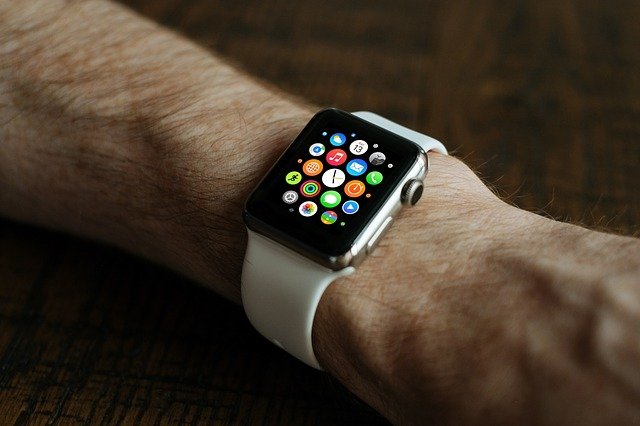Wearable technology
[edit] Introduction
Wearable technology is an article of clothing or a device that can be worn (or possibly carried as an implant) in order to transmit certain types of information. Sometimes referred to as wearables, these devices are generally used for health-related purposes.
Examples include smart watches (which can record various metrics of the wearer’s health and behaviour), smart glasses (which can provide visual imagery), smart clothing (which can provide heating, enhanced visibility or greater sensitivity), smart hearing aids and even smart jewellery (which can, for example, issue alerts to the wearer).
[edit] Wearables in construction and the built environment
Wearables can have a degree of 'intelligence' built in and can generally communicate with other devices directly or indirectly.
For construction purposes, wearable technology can be used in conjunction with navigation systems to assist with management of people, tools, equipment and so on. Animals are also able to wear devices or carry implants that can, in some cases, be relevant to the built environment. For example, a guide dog can be fitted with a wearable device to help assist its companion in and around the workplace.
Wearables can also be used in personnel distancing systems (known as PDS) which are proximity warning devices that can be fastened to an arm, belt, hard hat lanyards or wrist band. Once an exclusion zone has been programmed, these tags will sound an alarm and vibrate if the wearer gets too close to another wearer, dangerous plant, lorries and so on.
This form of wearable technology may be useful in warehouses and shops, allowing staff in a highly mobile environment to focus on their jobs and let the PDS alert them if distancing measures are being breached.
There is substantial potential for the deployment of wearables, but there are also significant technical, social and legal challenges.
[edit] Related articles on Designing Buildings Wiki
- Advanced construction technology.
- ConTech.
- ConTech in a post lockdown, pre-vaccine economy.
- Immersive Hybrid Reality iHR.
- Shaping the Future of Construction: Inspiring innovators redefine the industry.
- Smart sensor market.
- Trends towards wearables and wellbeing in buildings.
- Ubiquitous sensors to assess energy consumption and wellbeing in domestic environments.
- Wearables and wellbeing in buildings.
Featured articles and news
Infrastructure that connect the physical and digital domains.
Harnessing robotics and AI in challenging environments
The key to nuclear decommissioning and fusion engineering.
BSRIA announces Lisa Ashworth as new CEO
Tasked with furthering BSRIA’s impressive growth ambitions.
Public buildings get half a million energy efficiency boost
£557 million to switch to cleaner heating and save on energy.
CIOB launches pre-election manifesto
Outlining potential future policies for the next government.
Grenfell Tower Inquiry announcement
Phase 2 hearings come to a close and the final report due in September.
Progress from Parts L, F and O: A whitepaper, one year on.
A replicated study to understand the opinion of practitioners.
ECA announces new president 2024
Electrical engineer and business leader Stuart Smith.
A distinct type of countryside that should be celebrated.
Should Part O be extended to existing buildings?
EAC brands heatwave adaptation a missed opportunity.
Definition of Statutory in workplace and facilities management
Established by IWFM, BESA, CIBSE and BSRIA.
Tackling the transition from traditional heating systems
59% lack the necessary information and confidence to switch.
The general election and the construction industry
As PM, Rishi Sunak announces July 4 date for an election.
Eco apprenticeships continue help grow green workforce
A year after being recognised at the King's coronation.
Permitted development rights for agricultural buildings
The changes coming into effect as of May 21, 2024.






















